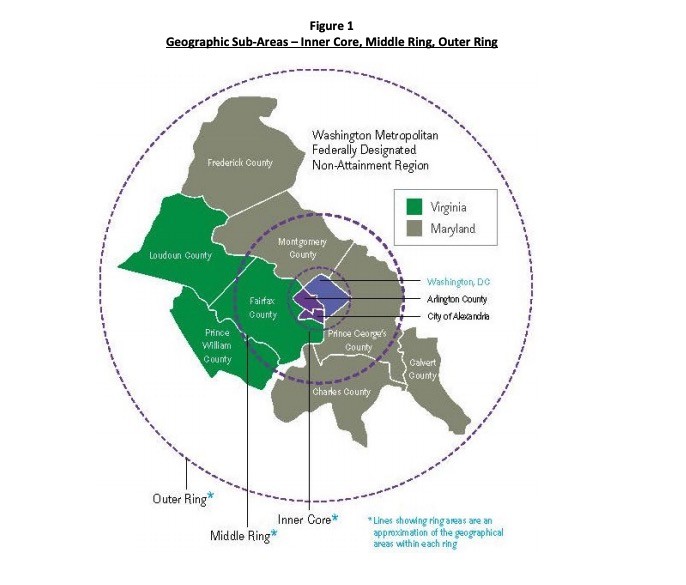Washington area commuters are driving less and using transit more

People's access to transit stops affects their commute decisions, a new survey from COG shows.
In recent years, there has been no shortage of bad news about local riders fleeing transit. The Metropolitan Washington Council of Governments (COG), however, has published a report indicating that commuters are increasingly choosing transit or telework over driving.
Since 2007, COG has noted a gradual decline in the percentage of workers that drive alone, decreasing from 66.9% to 58.3%. Carpooling saw an even greater drop, decreasing from 7.1% to 4.6%. Transit, biking and walking, and teleworking, on the other hand, all had marked increases over the last 12 years.
Graph from page 33 of the report. 
In total, nearly a quarter of commuters across the region reached work by transit, according to the report.
Unsurprisingly, the way people commute depends a lot on what part of the metropolitan region they live in. A plurality of commuters who live in the ‘inner core’ (DC, Arlington, and Alexandria) commute by transit. Likewise, 13% of commuters in the core area commute by bike, versus only 1% and 0% of commuters in the middle and outer rings, respectively.
Image from page 24 of the report. 
Graph from page 38 of the report. 
The COG report also touches on commuter satisfaction. Unsurprisingly, commuters with in the core of the region have shorter commutes and higher satisfaction with their commutes than those living farther outside of the center. Bike commuters reported the highest satisfaction with their commute by a wide margin, followed by bus commuters.
Metrorail commuters noted an increase in satisfaction since the 2016 survey, edging above a 50% satisfaction rate. Those commuting alone in a car, or in a car pool, reported the lowest satisfaction with their commute. Curiously, commuter train riders saw a large drop in satisfaction, plummeting from 90% in 2013 to 56% in 2019.
Graph from page 53 of the report. 
Despite these positive signs, DC Councilmember Charles Allen noted that the region is still too car dependent, and good, accessible bus service is an important equity issue.
Let’s also look at transit equity. The report finds middle & low-income working families use the bus twice the rate of other income groups. So when WMATA raises bus fares at 2x the rate of rail fares - like it did 2 years ago - it directly hurts those least able to afford it. pic.twitter.com/viCWDbdmrM
— Charles Allen (@charlesallen) September 18, 2019
The finding that should be no surprise at all is that the distance of your home from a bus stop or metro station is directly correlated to whether you choose that transit option. If we want to grow transit ridership, we have to invest & expand bus/rail access closer to home. pic.twitter.com/Cc9RLPotbv
— Charles Allen (@charlesallen) September 18, 2019
Another interesting tidbit is that it appears that residents under 35 appear to be moving away from car-free and car light households. Though this decrease is not encouraging, several commentators have also noted the connection between higher income and higher car ownership. Conversely, this trend could be linked to the fact that younger residents are being priced out of walkable and transit-friendly neighborhoods.
What else have you noticed in the report?
